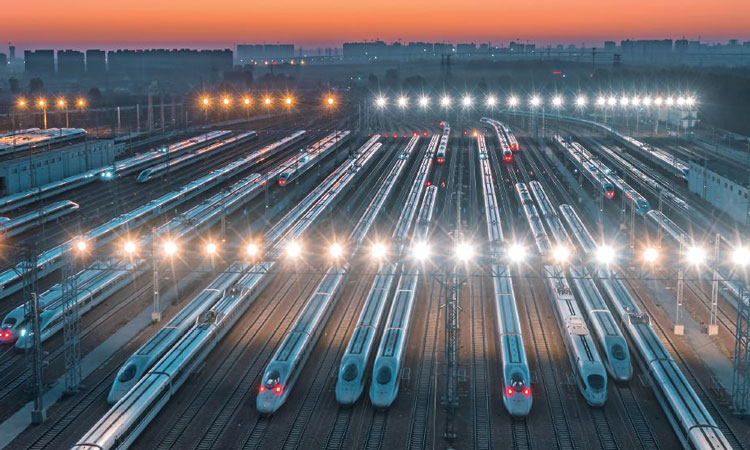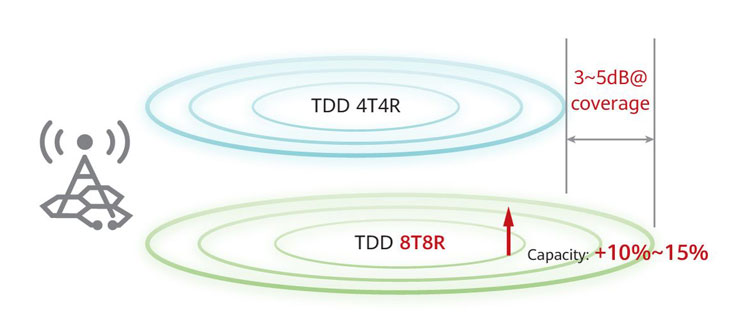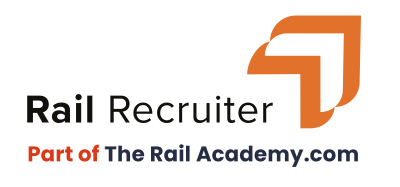Evolving beyond GSM-R with 5G-oriented FRMCS
Posted: 6 July 2022 | Huawei, Zhang Jianjun | No comments yet
In this interview for Global Railway Review, Zhang Jianjun, Vice President of Huawei Enterprise BG Wireless Marketing and Solution Sales Department, explains at a time when global rail networks are seeking new solutions to ensure safer and smarter operations, that railways urgently need a successor of GSM-R; and 5G oriented FRMCS can assist the sector in its digital transformation.


What do you consider to be the top three guiding principles in railway’s digital development?
During Asia Pacific Rail 2022, we talked to railway operators around the world, and the consensus is that we are all looking for solutions that make railways smarter, safer, more visualised, more efficient, and more reliable.
Success in the railway industry depends on safety, reliability, and affordability, with both operators and passengers expecting flawless service – but this requires communications networks that perform to the highest level.
It is clear as rail enters the next stage in its digital development, that next-gen safety requires a next-gen communication standard. Some would even argue that communication is the main battlefield of railway digitalisation. We believe 5G oriented FRMCS is key in enabling railway’s digital transformation.
Do you believe that GSM-R is in decline and therefore limiting innovation in digital rail development? If so, how can the industry overcome this challenge?
Success in the railway industry depends on safety, reliability, and affordability, with both operators and passengers expecting flawless service – but this requires communications networks that perform to the highest level.
Based on the 2G standard, it is clear that GSM-R cannot match the development requirements of the railway industry moving forward. While GSM-R has been used successfully for the last 20 plus years, today, the decline of GSM-R is constraining the innovation of the digital railway due to its complex, tangled architecture. Simply, with its narrow 4 MHz bandwidth, GSM-R capacity is not large enough to meet additional requirements and is limiting the flexibility of services such as railway multimedia dispatching communications, railway infrastructure smart management, trackside IoT, prediction maintenance and passenger service information transmission.
In short, railways urgently need a successor of GSM-R which provides a new broadband wireless communications system to meet the surging requirements of railway applications.
Boarder bandwidth, new decouple architecture and long-term evolution FRMCS based on LTE and beyond would be accepted by many railway operators.
The benefits of FRMCS, over GSM-R, are clear. Beyond doubt, we see an increase in safety, efficiency – 500km/h as opposed to 350-400km/h with GSM-R, and an increased data rate – from 9.6 Kbps with GSM-R to 100 Mbps, with the cloud-based architecture of 4G and beyond. These benefits are further evidenced by more than 130 rail and metro lines around the world that are already utilising LTE and 5G along 2,000km of track. In addition, the European Union aims to see 5G by 2025. As such, it is clear, that FRMCS is the way forward for the future of rail radio communications and a key step in rail’s digital development.
If FRMCS is the way forward, how can the balance between its cost and value be achieved?
…railways urgently need a successor of GSM-R which provides a new broadband wireless communications system to meet the surging requirements of railway applications.
New does not need to be expensive. Naturally, replacing the entire network is costly for any railway operator. With this in mind, Huawei’s solution supports a smooth evolution from GSM-R to LTE, with flexible interworking. While progressing from GSM-R to 5G carries significant costs, as all hardware would need to be displaced, effectively doubling the investment needed, in the future, the evolution from LTE to 5G will require only the software to be updated, providing another financial benefit for rail operators to consider.
The Commission Implementing Decision (EU) 2021/1730 released on 28 September 2021 has specified that FDD 874.4-880.0 MHz (for uplink transmission from the terminal to base station) / 919.4-925.0 MHz (for downlink transmission from the base station to terminal) and TDD 1900-1910 MHz will be used as radio frequencies of FRMCS in Europe. FDD 2 x 5.6 MHz is traditional railway radio frequency, but it is not included in the 3GPP standard. Therefore, it is difficult to find products based on this frequency.
In contrast, the TDD 1900-1910 MHz, compliant band 39/n39 (1880-1920 MHz) belongs to the 3GPP. Most mainstream commercial products, including base station and handset, already support LTE band 39. Some industry handsets support this bandwidth as well, which means the E2E solution-based LTE is more mature and realistic. Consequently, Huawei propose the high spectral LTE TDD1900 MHz to be the preferred FRMCS frequency band for rail at present.
Technologies such as Huawei’s unique 8T8R multi-array smart antennas (see below figure) improve the coverage by 10 to 15 per cent compared with the industry’s 4T4R technology, allowing for fewer base stations and cost savings.


Huawei’s unique dual-network solution at the same site also improves the reliability of the FRMCS radio network to 99.999 per cent (Huawei unique).
Improving FRMCS wireless network coverage through high-power terminals (31 dbm Cab Radio), further increases the efficiency offered to operators. As such, the value presented in upgrading software from GSM-R to LTE, becomes clear.
Huawei has achieved some industry milestones in tech leadership with FRMCS – can you tell us more about these?
Huawei is the first in the industry to complete the test and commercial application of the 3GPP-based FRMCS-oriented LTE solution. Huawei already has five use cases – the most in the world – and one of these networks has been running for seven years.
Huawei is the first to complete the E2E test of UIC user cases, and also the first to complete the FRMCS-LTE signal system interconnection test. We are also aiming at launching Huawei’s proprietary FRMCS solution at InnoTrans 2022, which will take place in September.
At the Huawei Global Rail Summit 2022, we released the Future Railway Mobile Communication System (FRMCS) whitepaper (see video below), which expounds the necessity of, and approaches to, leveraging FRMCS to drive the digital transformation of railway transportation from the perspectives of industry trends, spectrum selection, networking architecture, and key wireless technologies, providing significant references to the planning and construction of the future mobile communication systems for railways.
Zhang Jianjun is responsible for strategic planning, technical sales, and ecosystem cooperation of Huawei Enterprise Wireless products and solutions. He has 21 years of wireless architecture design, R&D, and sales experience, and has taken part in dozens of key projects such as China Railway GSM-R Communication System projects, China Metro LTE-M System projects, the Germany Railway DB Communication Project, the South Africa Railway Communication Project, and the Thailand Police eLTE Project. He has a deep understanding of 4G/5G technologies in the transportation industry.
Related topics
5G, Digitalisation, Future Railway Mobile Communications System (FRMCS), Global System for Mobile Communications – Railway (GSM-R), Operational Performance, Signalling, Control & Communications, Technology & Software







